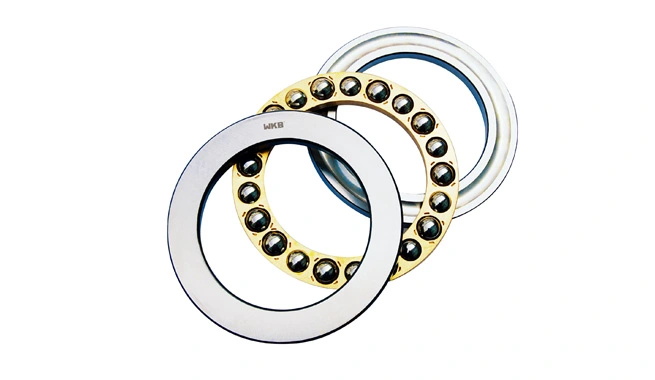Thrust Ball Bearings

Termékleírás
Thrust Ball Bearings
Thrust ball bearings handle axial loads by utilizing rolling elements that resemble balls. They can support high axial loads in one direction, often used in applications like automotive transmissions and where axial forces are predominant.
What are thrust ball bearings for shaft ends?
Thrust ball bearings are a type of rotary bearing designed to handle axial (thrust) loads, which are forces parallel to the shaft's axis. Unlike radial single thrust ball bearing that primarily support radial loads (perpendicular to the shaft), thrust ball bearings are specifically engineered to manage axial loads in one direction.
Key features of thrust ball bearings
Design: Thrust ball bearings consist of two washers (a shaft washer and a housing washer) and a set of ball bearings retained by a cage. The ball bearings enable smooth rotation between the washers.
Direction of Axial Load: Thrust ball bearings are designed to handle axial loads in one direction only. They are not suitable for radial loads or bidirectional axial loads.
Single-Direction and Double-Direction Types: There are single-direction axial ball thrust bearing type that can accommodate axial loads in one direction, and double-direction thrust ball bearings that can handle axial loads in both directions.
Contact Angle: Thrust ball bearings typically have a 90-degree contact angle between the ball and the raceway, ensuring efficient load transfer.
Separable Design: Many thrust ball bearings are separable, meaning that the shaft washer, housing washer, and ball cage assembly can be separated for ease of installation, inspection, and maintenance.
It's crucial to choose the right type and size of thrust ball bearing from reputable thrust ball bearings manufacturers based on the specific axial load requirements and operating conditions of the application. The proper lubrication and maintenance are also essential for ensuring optimal performance and longevity of thrust ball bearings.
What is the difference between axial and radial bearing?
Axial (thrust) bearings and radial bearings are two fundamental types of bearings designed to handle different types of loads in mechanical systems. Here are the key differences between axial and radial bearings:
Load Direction:
Radial Bearings: Designed to support radial loads, which are forces acting perpendicular to the shaft's axis. Radial bearings primarily handle the weight of rotating components and resist radial forces.
Axial (Thrust) Bearings: Specifically engineered to handle axial loads, which are forces acting parallel to the shaft's axis. Axial bearings support and control thrust forces generated during axial movements.

